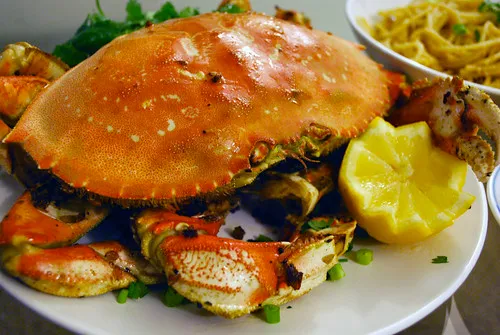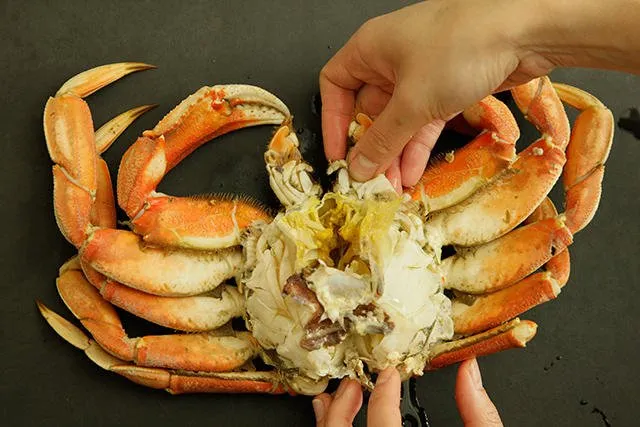Five things that you do not know about Dunginis crab, plus it is very tasty:
@ahmedkedd

01-. You can catch them yourself.
According to the California Department of Fish and Wildlife, during the recreational crab season (which typically begins on the first Saturday in November) you can catch and keep up to ten Dungeness crabs per day, as long as they measure at least 5 ¾ inches across. Most people use crab traps to bring in their haul. Just be sure to haul them from a public pier, as per state law—unless you have a sport-fishing license.
02-. The faster and snappier, the tastier.
If you’re selecting a live crab, remember to look for one with a spring in its step. A slow or immobile crab is usually an unhealthy crab. So choose one that is quick, alert, and preferably large (to ensure you’re getting as much meat as possible).
03-. Dungeness crab packs a punch in the fishing industry.
In California, Oregon, and Washington—where much of the nation’s Dungeness crab comes from—fishermen caught 53 million pounds of the salty-sweet crustacean and brought in $169 million in 2014 (the most recent year data is available). This makes up almost a quarter of the Pacific region’s fishing industry, even though the season only lasts a few months out of the year.

04-. They are named after their habitat.
The name “Dungeness” comes from one of the most fertile habitats of this species: the Dungeness Spit, a sandy stretch of land in Northwest Washington. The Spit and surrounding community is located on the Strait of Juan de Fuca and named after a desert-like beach of the same name in England.
05-. Dungeness crabbing season starts in winter.
While crab usually elicits thoughts of summer cookouts, Dungeness season begins in mid-November to early December. Though the season technically lasts until July, most of the crabbing (especially in California) happens during the first few months.